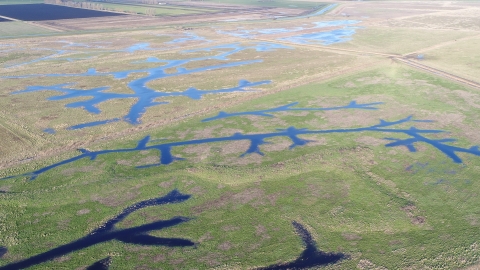The 2 February each year is World Wetlands Day, when we raise global awareness about the vital role of wetlands for people and wildlife. This day also marks the date of the adoption of the Convention on Wetlands on 2 February 1971, in the Iranian city of Ramsar.
As the only global treaty to focus on a single ecosystem (wetlands), the Convention on Wetlands involves designating wetlands of international importance (Ramsar Sites), one of which is our own Woodwalton Fen.
Woodwalton Fen is owned by the Wildlife Trust BCN and managed by Natural England, and its history and the legacy of the Rothschild family was explained on the Antiques Road Trip (BBC1, 10 January 2020). This episode included a visit by antiques expert, James Braxton, when he came for stroll into the past at Woodwalton Fen, and we took the opportunity to reveal some of the treasures of this national nature reserve.
At this time of year, this jewel in the crown of the Great Fen, along with it's sister reserve, Holme Fen, hosts a variety of wetland wildlife, including a range of waterfowl; from the familiar greylag goose to the tiny teal duck, as well as the fascinating shoveler, and the stunning pintail.
Whooper swans have been visiting the deeper water in the restoration areas of the Great Fen, such as at Rymes Reedbed, the area north of Holme Fen. This area and the adjacent Kester's Docking are growing in interest to their visitors, people and wildlife alike, in part due to the variety of raptors which can be found there throughout the year.
As part of our monitoring and research programme, the latest survey for raptors across the Great Fen recorded plenty of buzzards, kestrels and red kites but also short-eared owls, currently having been seen quartering the fields at New Decoy Farm. The new Great Fen map, gives you the chance to plan your visits to see these areas and the growing diversity of wildlife.
If you would be interested in helping the Wildlife Trust in the monitoring of the Great Fen, have a think about the skills you might like to offer, as well as your time, and contact me Henry Stanier, for opportunities to join in, and discover first hand what changes come about in the years to come.
As restoration work continues at the Great Fen, and we proactively bring about change, water levels rise in specific areas, and the wildlife responds, attracted to this Living Landscape to overwinter and feed in the productive wetlands it provides. Little egrets have started to join the throng at Kester's Docking, part of what was Whittlesey Mere, using the home once inhabited by many other members of the heron family, but was drained over 150 years ago; times are changing, for the better.
Henry Stanier (Great Fen Monitoring and Research Officer)

